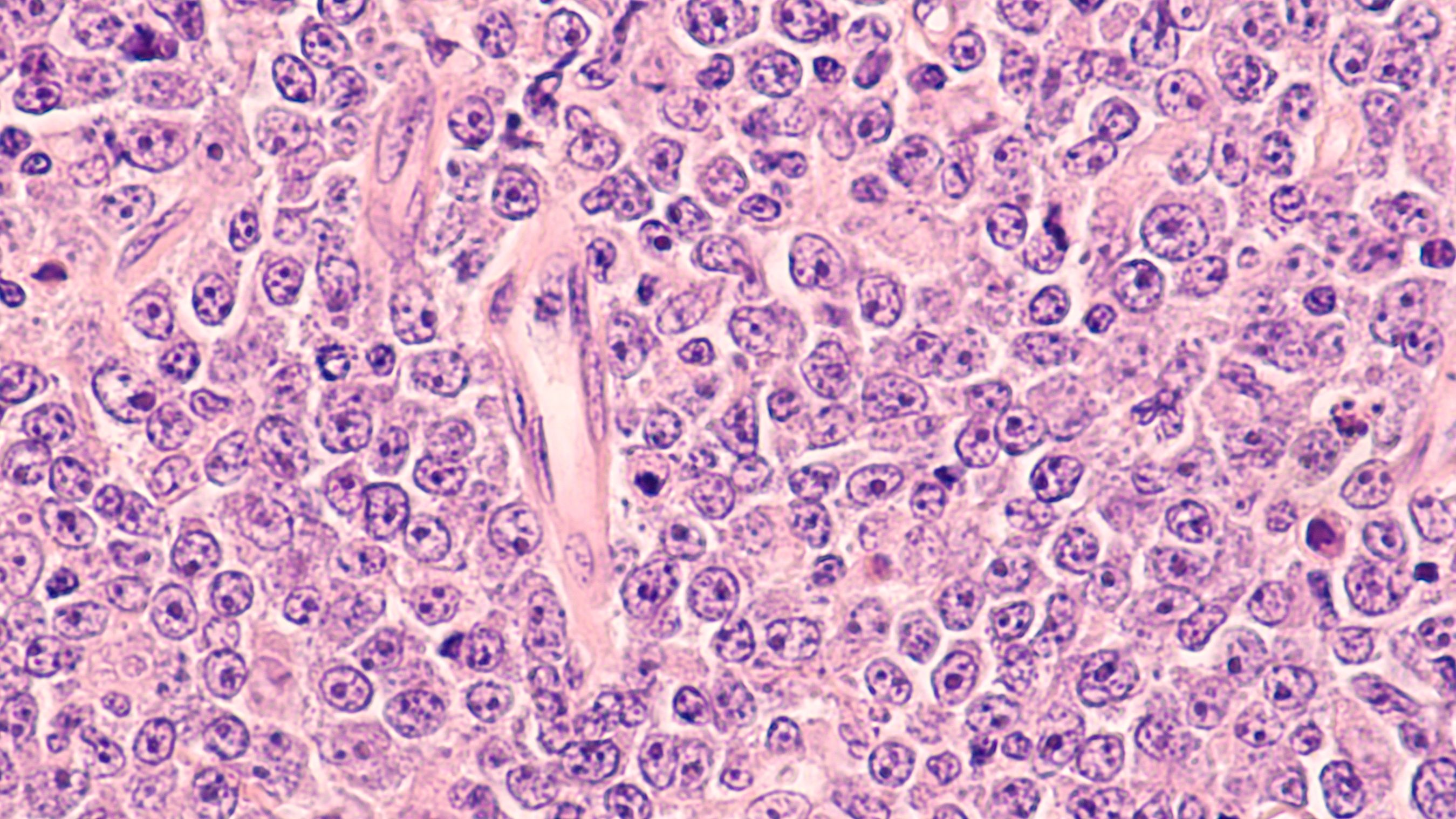Article
Axi-Cel Use in Patients With Large B-Cell Lymphoma Leads to Longer Overall Survival
Author(s):
A single dose of axicabtagene ciloleucel in patients with large B-cell lymphoma led to significantly higher overall survival and progression-free survival rates, as well as improvements in quality of life and faster recovery in comparison to standard care therapy.
Administration of axicabtagene ciloleucel (axi-cel; Yescarta) as treatment for patients with large B-cell lymphoma (LBCL) resulted in a significantly longer overall survival (OS) rate when compared to a standard, multistep treatment, according to a new study published in The New England Journal of Medicine.
Credit: David A Litman - stock.adobe.com.

“We found that axi-cel as a second-line treatment for patients with early relapsed or refractory large B-cell lymphoma was superior to platinum-based chemotherapy and autologous stem-cell transplantation as a curative therapy,” the investigators said.
The study randomized 359 patients into a group of 180 receiving axicabtagene ciloleucel and 179 who received standard care, which was 2 or 3 cycles of chemoimmunotherapy followed by high-dose chemotherapy and autologous stem-cell transplantation (HDT-ASCT) in those who had a partial or complete response. The primary outcome was event-free survival (EFS).
Results of the study show that treatment with axicabtagene ciloleucel produced a 27.4% reduction in the risk of death and an improvement in survival at 4 years by 8.6 percentage points.
At a median follow-up point of 47.2 months (range, 39.8 to 60.0), death occurred in 82 patients in the axicabtagene ciloleucel cohort and 95 patients in the standard care group, a significant improvement in survival, the study shows.
According to the study, the estimated OS rate (OSR) at the 4 year mark was 54.6% (95% CI, 47.0 to 61.6) for patients receiving axicabtagene ciloleucel and 46.0% (95% CI, 38.4 to 53.2) for those who received standard care. The median OSR was not reached in the axicabtagene ciloleucel cohort (95% CI, 28.6 months to not estimable) and was 31.1 months (95% CI, 17.1 in not estimable) the standard care cohort.
Due to a lack of response to therapy or disease progression in the standard care group, 102 patients (57.0%) received off-protocol cellular immunotherapy. Seventy-nine (77.5%) of those patients were given axicabtagene ciloleucel, which the researchers say resulted in an even greater OS benefit.
An assessment of progression-free survival (PFS) confirmed the efficacy of axicabtagene ciloleucel as a treatment option over standard care, with a median PFS of 14.7 months (95% CI, 5.4 to 43.5) for the former and 3.7 months (95% CI, 2.9 to 5.3) for the latter (hazard ratio, 0.51; 95% CI, 0.38 to 0.67), according to the study.
In treating patients with LBCL, the standard second-line treatment for almost 30 years has been a multipart regimen that begins with platinum-based chemotherapy and, in patients with a high response, subsequent treatment using HDT-ASCT, investigators say in the study.
However, only half of patients with LBCL are typically eligible for this treatment, and of these, only about 20% are eventually cured, the researchers write. Further, outcomes for patients who do not advance to HDT-ASCT are poor, as they have a median OS of 4.4 months.
Although previously approved as a third-line or later treatment, researchers conducted the phase 3 ZUMA-7 trial to compare axicabtagene ciloleucel to standard second-line treatment in patients with early relapsed or primary refractory LBCL. This study showed that axicabtagene ciloleucel was superior to standard care and led to longer EFS and higher response rates.
Despite this, investigators knew that more research was necessary to get a better sense of long-term outcomes and OS of patients using axicabtagene ciloleucel as second-line treatment.
Among the limitations in the study, researchers noted that more work needed to be done to improve survival rates even further. This could potentially be done by providing axicabtagene ciloleucel in an earlier line of treatment. This would allow patients to have a treatment with a higher level of fitness—mainly, a greater proportion of T-cells and improved therapeutic index.
Still, the improvement in prognosis in patients with LBCL who were given axicabtagene ciloleucel is clear.
“Among all the patients in our trial, those who received axi-cel had a significantly longer time without symptoms or toxic effects, with a clinically important gain in quality-adjusted survival, clinically meaningful improvements in quality of life, and faster recovery to baseline as compared with standard care,” the investigators concluded.
Reference
Westin, J.R., et. al. (2023) Survival with axicabtagene ciloleucel in large B-cell lymphoma. The New England Journal of Medicine. Available at https://www.nejm.org/doi/10.1056/NEJMoa2301665. Accessed June 15, 2023.
Newsletter
Stay informed on drug updates, treatment guidelines, and pharmacy practice trends—subscribe to Pharmacy Times for weekly clinical insights.






